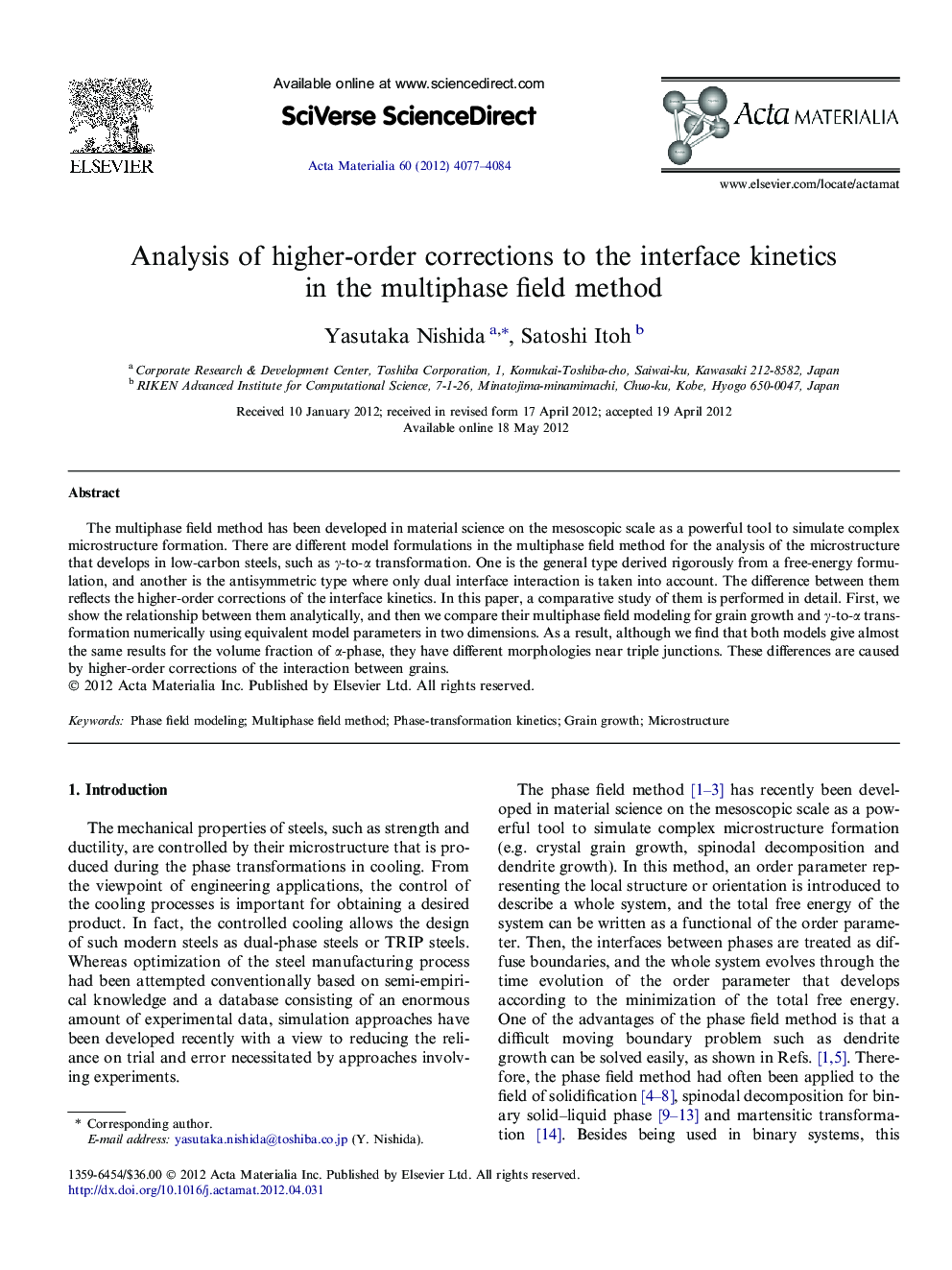| Article ID | Journal | Published Year | Pages | File Type |
|---|---|---|---|---|
| 1446655 | Acta Materialia | 2012 | 8 Pages |
The multiphase field method has been developed in material science on the mesoscopic scale as a powerful tool to simulate complex microstructure formation. There are different model formulations in the multiphase field method for the analysis of the microstructure that develops in low-carbon steels, such as γ-to-α transformation. One is the general type derived rigorously from a free-energy formulation, and another is the antisymmetric type where only dual interface interaction is taken into account. The difference between them reflects the higher-order corrections of the interface kinetics. In this paper, a comparative study of them is performed in detail. First, we show the relationship between them analytically, and then we compare their multiphase field modeling for grain growth and γ-to-α transformation numerically using equivalent model parameters in two dimensions. As a result, although we find that both models give almost the same results for the volume fraction of α-phase, they have different morphologies near triple junctions. These differences are caused by higher-order corrections of the interaction between grains.
